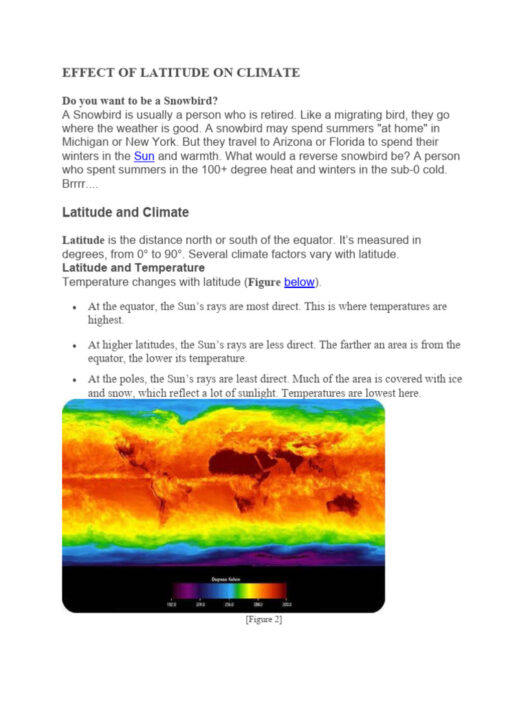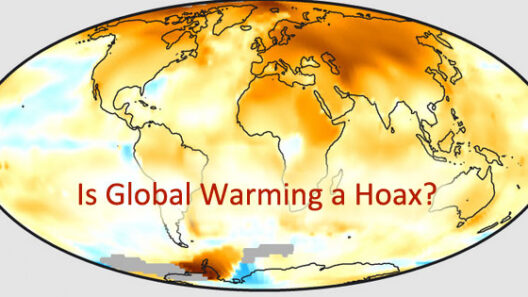Climate change and global warming are two intertwined concepts that have increasingly dominated environmental discourse, capturing the attention of scientists, policymakers, and citizens alike. At their core, they represent the mechanisms by which human activities alter the delicate balance of Earth’s climate system. Understanding these phenomena is not merely an academic exercise; it is crucial for envisioning the future of our planet. To fully comprehend the implications of these changes, we will delve into their definitions, causes, effects, and potential solutions.
One cannot discuss global warming without first establishing what it entails. Global warming refers to the long-term increase in Earth’s average surface temperature due to human-induced emissions of greenhouse gases—namely, carbon dioxide (CO2), methane (CH4), and nitrous oxide (N2O). This temperature rise is primarily the result of burning fossil fuels, deforestation, and industrial processes. The Intergovernmental Panel on Climate Change (IPCC) conveys that since the late 19th century, the planet’s surface temperature has risen by approximately 1.1 degrees Celsius (2 degrees Fahrenheit). While this may appear modest, even slight changes in temperature can have profound ramifications in terms of shifting weather patterns, rising sea levels, and disrupting ecosystems.
Climate change, on the other hand, encompasses a broader spectrum of alterations in weather patterns over extended periods, including aspects such as precipitation, temperature extremes, and more frequent and severe natural disasters like hurricanes, droughts, and floods. It poses a formidable challenge, influencing not only the environment but also socio-economic factors that affect livelihoods across the globe. It is crucial to recognize these terms not just as scientific jargon but as a clarion call to action.
While the mechanisms behind global warming are complex, they can be distilled into a few fundamental causes integrated into a feedback loop that exacerbates the problem. The greenhouse effect is a natural process wherein certain gases in the atmosphere trap heat from the sun, maintaining temperatures conducive to life on Earth. However, human activities are intensifying this effect. For instance, the combustion of fossil fuels is releasing CO2 in an unprecedented manner, overwhelming the Earth’s ability to absorb these emissions.
The ramifications of unchecked global warming are dire. The oceans act as a massive heat sink and have absorbed much of this excess warmth, but this comes at a cost. Ocean temperatures are rising, causing coral bleaching, altering marine ecosystems, and contributing to ocean acidification, which endangers numerous marine species and threatens the fisheries upon which millions depend. The ramifications extend well beyond the oceans; terrestrial ecosystems are also impacted. Species find themselves unable to adapt to rapidly changing climates, leading to increased extinction rates.
Rising sea levels are among the most visible consequences of climate change. Melting polar ice caps and glaciers contribute to this phenomenon, endangering coastal communities worldwide. Estimates suggest that sea levels could rise by up to three feet by the end of the century if current trends continue—this could displace millions of individuals, creating climate refugees and igniting geopolitical tensions over scarce resources.
Extreme weather events are becoming more prevalent and severe as a result of climate change. Heatwaves occur with alarming frequency, threatening public health. According to studies, increased temperatures can affect agricultural yields, compounding food insecurity in vulnerable regions. In addition, shifting weather patterns lead to altered precipitation rates, bringing about intensified droughts in some areas while triggering torrential rainfall and flooding in others. The direct economic costs associated with these phenomena can be staggering, amounting to billions of dollars in damage and economic disruption.
The social implications are equally grave. Vulnerable populations, especially in developing nations, bear the brunt of climate change effects. Limited infrastructure, a lack of resources, and susceptibility to natural disasters exacerbate existing inequalities. These issues are deeply interconnected, illustrating how climate change exacerbates socio-economic disparities. Consequently, the call for climate justice grows louder, demanding equitable solutions for those disproportionately affected by climate change.
Transitioning to a more sustainable and resilient future necessitates urgent and comprehensive action. Mitigating the impacts of climate change involves not only reducing greenhouse gas emissions but also exploring innovative and sustainable practices across various sectors. Renewable energy sources—including solar, wind, and hydroelectric power—offer promising alternatives to fossil fuels, significantly reducing the carbon footprint of societies.
Reforestation and afforestation initiatives can serve a dual purpose: preserving biodiversity while acting as carbon sinks. Sustainable agricultural practices, such as regenerative farming, can help restore soil health and enhance food security. Achieving tangible progress often requires robust international cooperation and policy frameworks that facilitate accountability and set ambitious but attainable climate goals.
In conclusion, the issues of global warming and climate change encapsulate one of the most pressing challenges of our time. Understanding their dynamics is paramount for safeguarding our planet’s ecosystems and the livelihoods of future generations. Rather than succumbing to despair, we have the opportunity to implement systemic changes with far-reaching benefits. The time to act is now; the future of our world hinges upon our willingness to embrace sustainable practices and foster an ethos of environmental stewardship. By confronting this challenge with resolve, we can nurture a flourishing planet that supports both humanity and nature in harmony.






